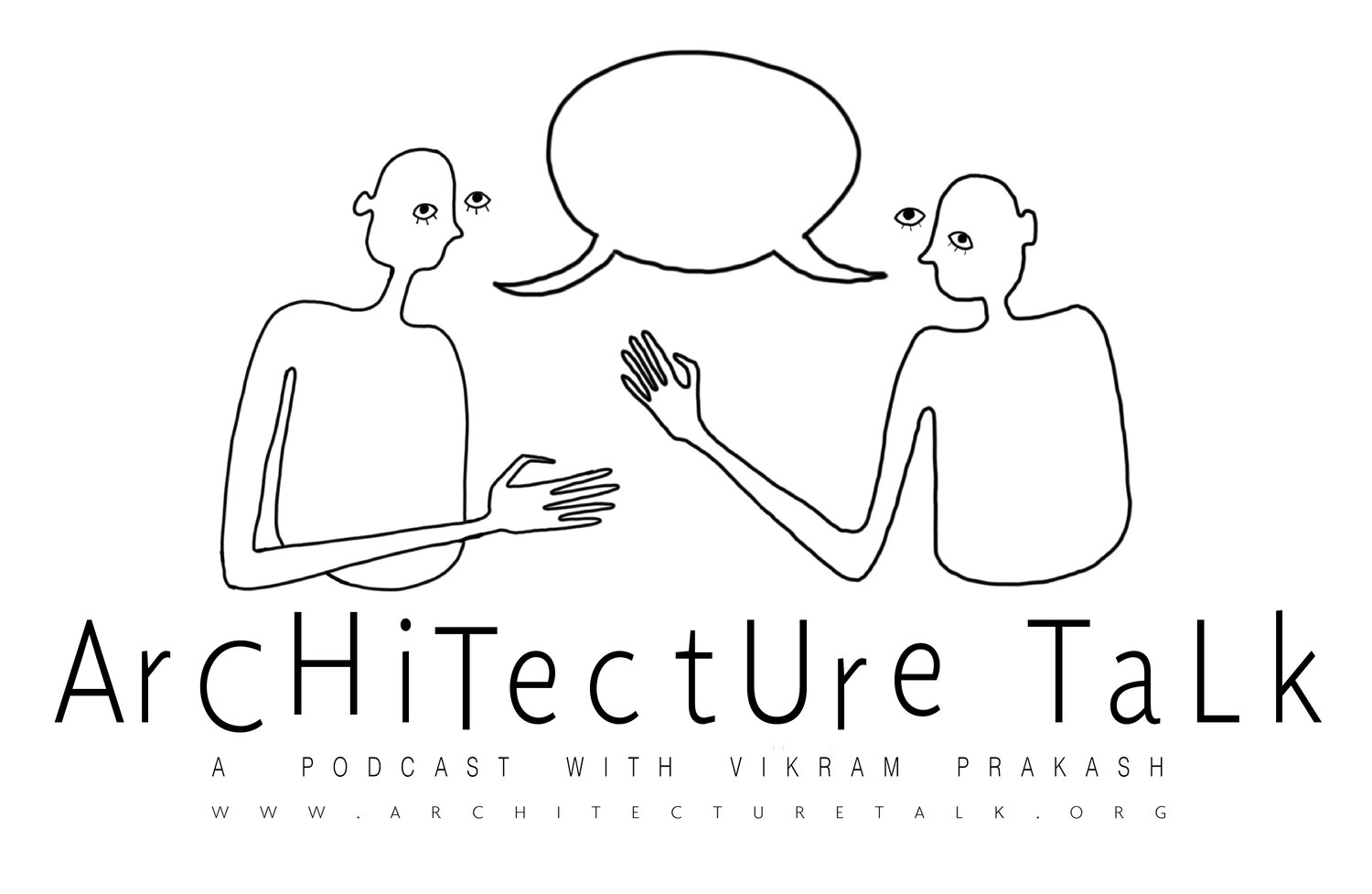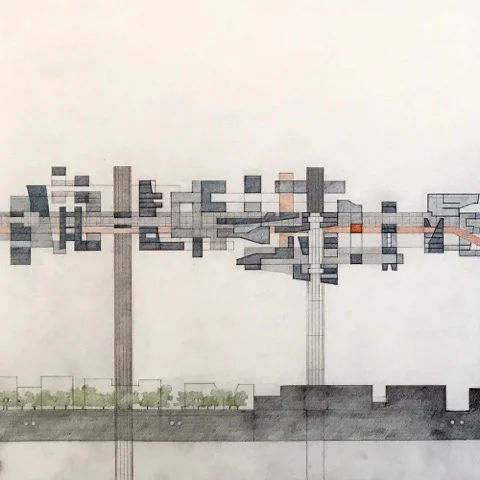61. Rugged Individualism, the career of Gordon Walker
Image credit: Mithun
“…you don’t build a continuity of a practice and build it up. You build a life…and I’ve been much more interested in life than a having a magnificent practice.”
This week, we are joined by prolific architect of northwest modernism, Gordon Walker as we discuss Grant Hildebrand’s biography, “Gordon Walker, A Poetic Architecture”
Published by Arcade, July 2, 2019
Menu image: Lucia Marquand
Timestamp Outline
2:01 “…so tell me Gordon, what got you into architecture?”
3:33 Gordon recalls growing up in a “craft inspiration” and how that inspired his experience at the University of Idaho
3:59 Gordon discuss his fascination with Frank Lloyd Wright, in particular his work in Oak Park, Illinois and Unity Temple, which inspired Gordon’s concrete block project in Seattle’s Queen Ann Neighborhood
5:52 Gordon describes his love of the formal, referencing a Unity Temple diagram
7:18 “So you started in Idaho, what brought you to Seattle?” - VP
Gordon responds with his attraction to the 1962 Seattle World’s Fair and the work of Paul Kirk. 8:49 Regardless of his attempts to be employed by Kirk, Gordon found himself in Ralph Decker’s office just after the completion of the old Seattle Public Library
9:44 “If I spent five years studying architecture and this is what architects do, I’ve made a mistake,” Gordon describes the turning point, leading him to return to his craft roots and take a tour of Cathedrals of Europe with his wife.
10:23 Gordon speaks to his relationship with architect, Ralph Anderson
10:53 Gordon returns to his time at the World’s Fair, recalling an encounter with Bud Shore (Who was of the same graduating class at the University of Washington with Jim Olson and David Fukui)
12:14 Gordon’s thoughts on the Space Needle and other projects by Yamasaki at the fair. Mentioning his icons “space gothic” projects and the Key Arena
12:54 Gordon recalls a job through Grant Jones, of Jones and Jones to work on the Seattle Center Master Plan. He references the plan of Tivoli as being similar to the original worlds fair campus design. Architect Paul Thiry, who was principle overseeing the fair’s original design, was not pleased.
14:30 “How do you think the architecture culture has changed since in the 60’s…in Seattle?” - VP
15:04 Gordon refers to the growth in scale of private residential practice, but also the successes of friends, Jim Olson at Olson Kundig and Miller Hull
16:03 To the question, “what would you describe is the Seattle design ethic?” Gordon replies, “Light, air and views…” continuing to describe structure as the way he resolved these ethics in his work.
18:02 “How did your practice respond to [the postmodern movement]?” -VP
18:32 Gordon references his project, Hill Climb Court which was awarded an AIA Honor Award by Juror, Charles Gwathmey who continued on to evaluate the Portland Building by rival architect, Michael Graves. In return, Gordon would eventually be a preliminary juror on a project of Charles’ at UC San Diego
20:33 Vikram and Gordon discuss more of his career milestones, including his time as principle at nbbj and now as a consultant at Mithun
20:55 “…you don’t build a continuity of a practice and build it up. You build a life…and I’ve been much more interested in life than a having a magnificent practice.” - GW
21:16 Vikram asks Gordon about his home on Orcas Island
22:30 Vikram asks “You ran into Murcutt in your life and career?”
26:18 Gordon talks about his latests project, a larger home for a private client and doing smaller details for his wife’s interior design practice.
27:31 “When you look back at your career and your time here in Seattle, do you think there is such a thing as a Seattle Style?” - VP
To which Gordon responds, “It’s VG Fir if anything…Vertical grain Fir” and continues to refer to Kirk and Anderson and his “little cabin” on Orcas
29:31 Gordon’s assistant, Kelly Rodriguez, recalls attending a lecture by Doug Kelbaugh on a Pacific Northwest Architecture, which he described as a “Rugged Individualism”
31:25 “I would be delighted to try a new building type…” - GW
Vikram asks about his project near Pike Place Market. Gordon continues to refer to his thesis project and his interests in pottery
31:45 Vikram and Gordon discuss tradition and Modernism and the use of formal plan organization, referencing Jazz and Classical in Music and Ballet technique in dance.
36:40 “What do you think are the important issues looking ahead…?”- VP
Gordon goes on to discuss new materials and technologies and sustainability







